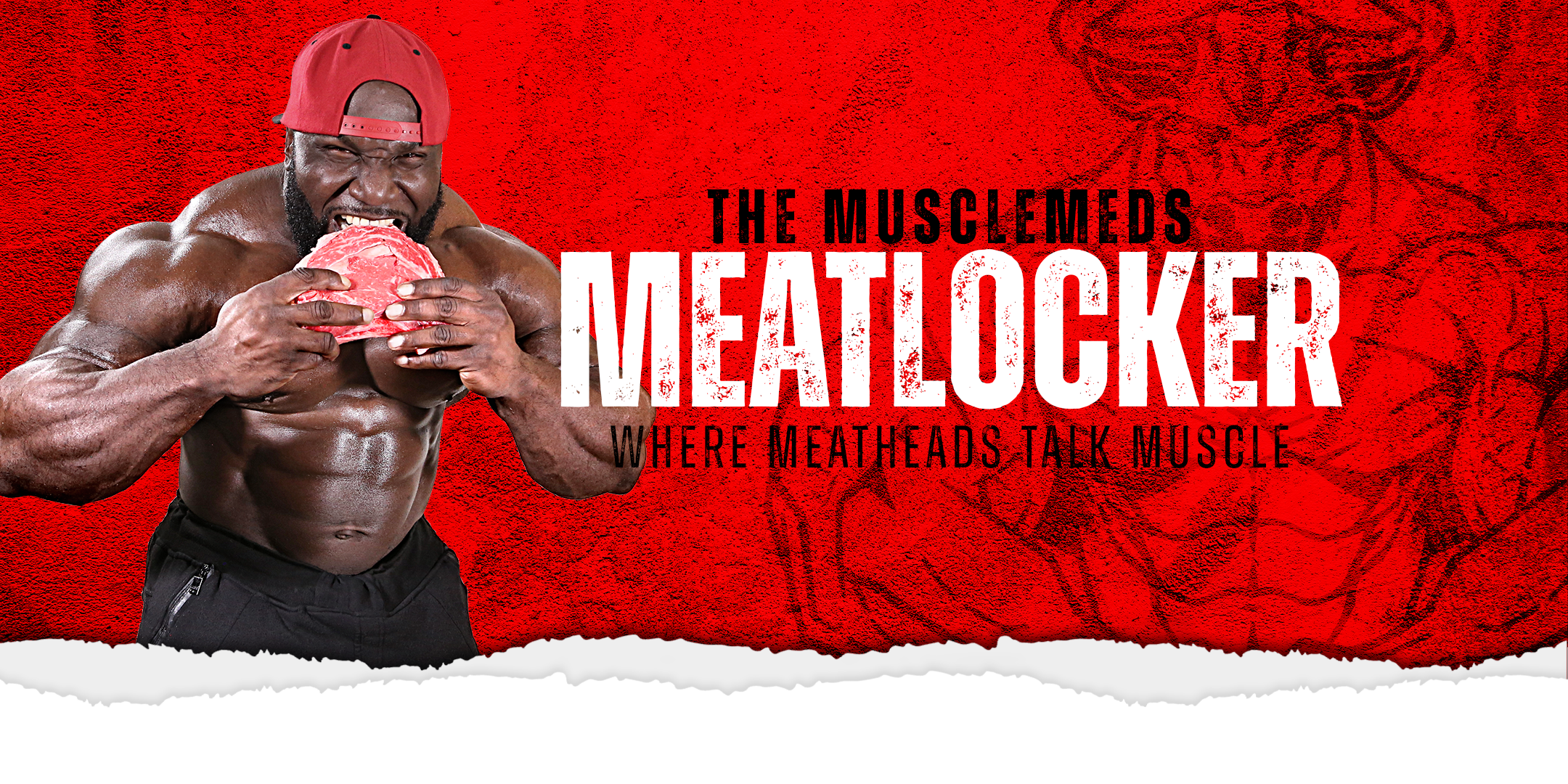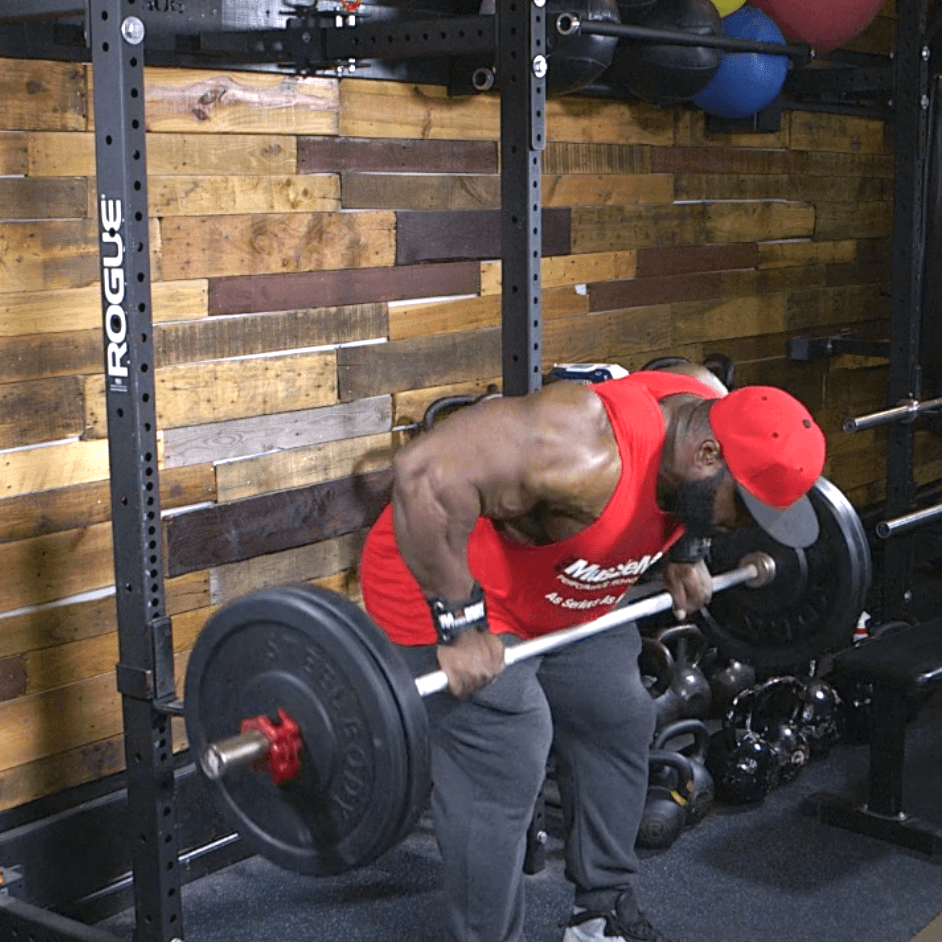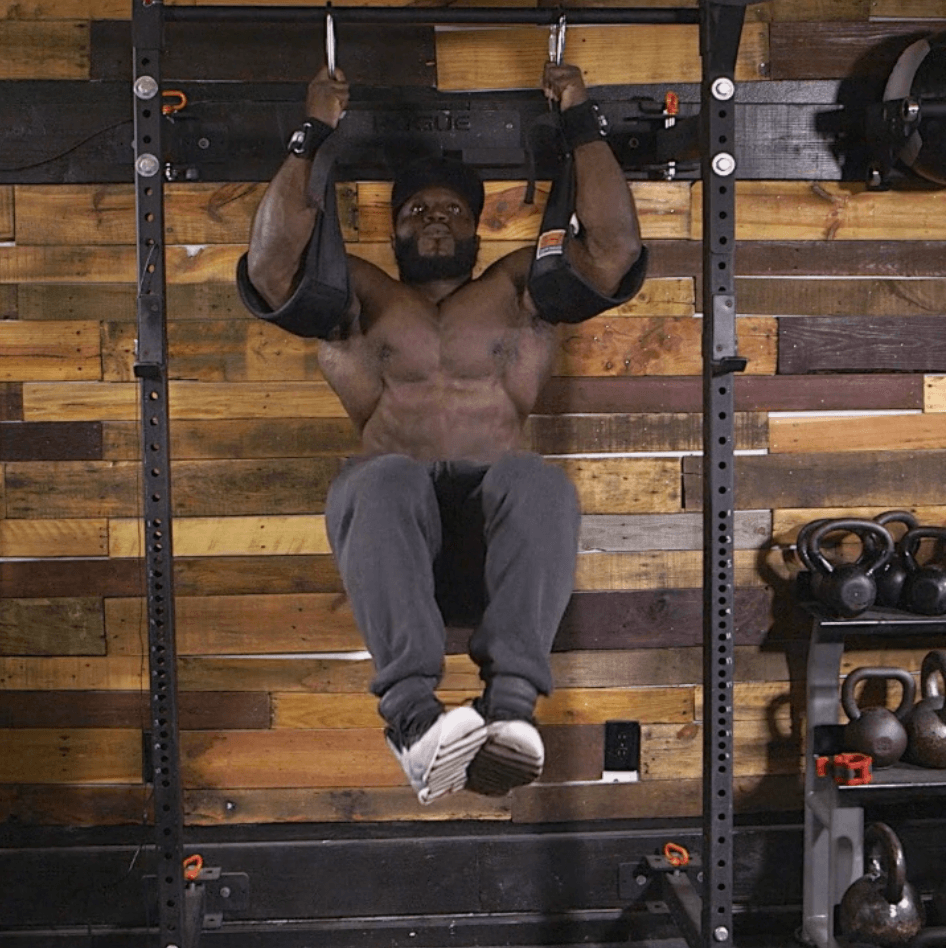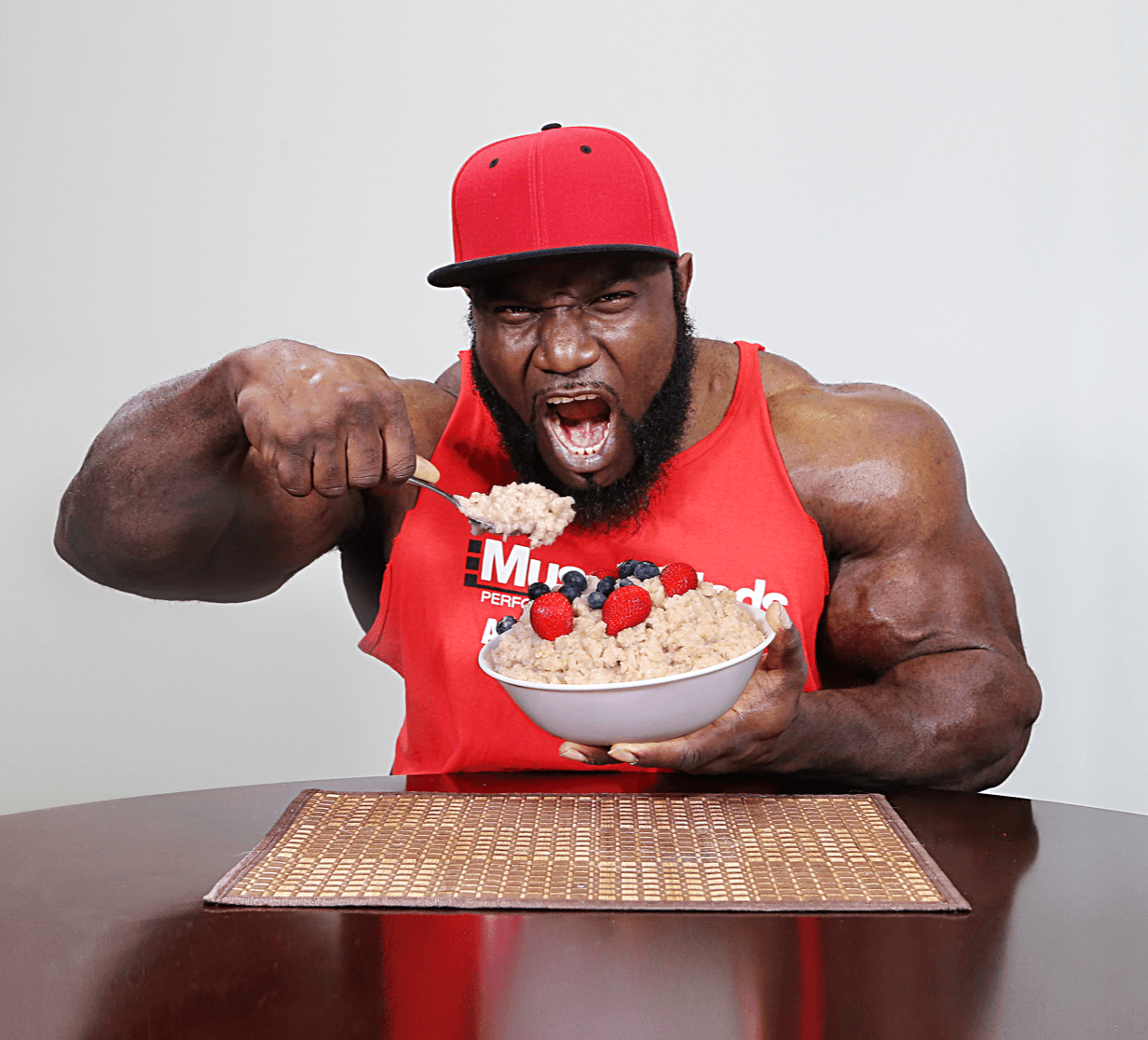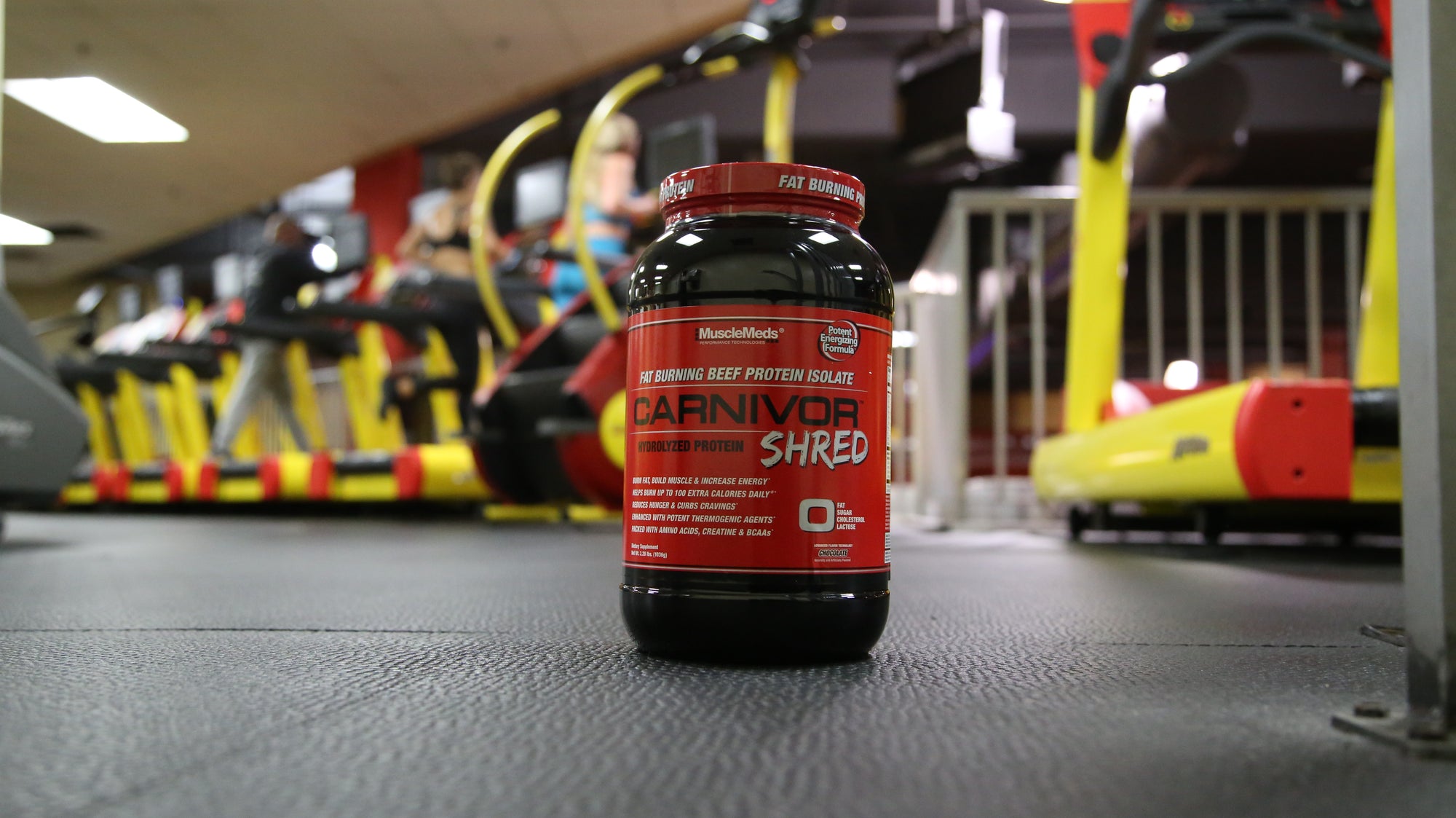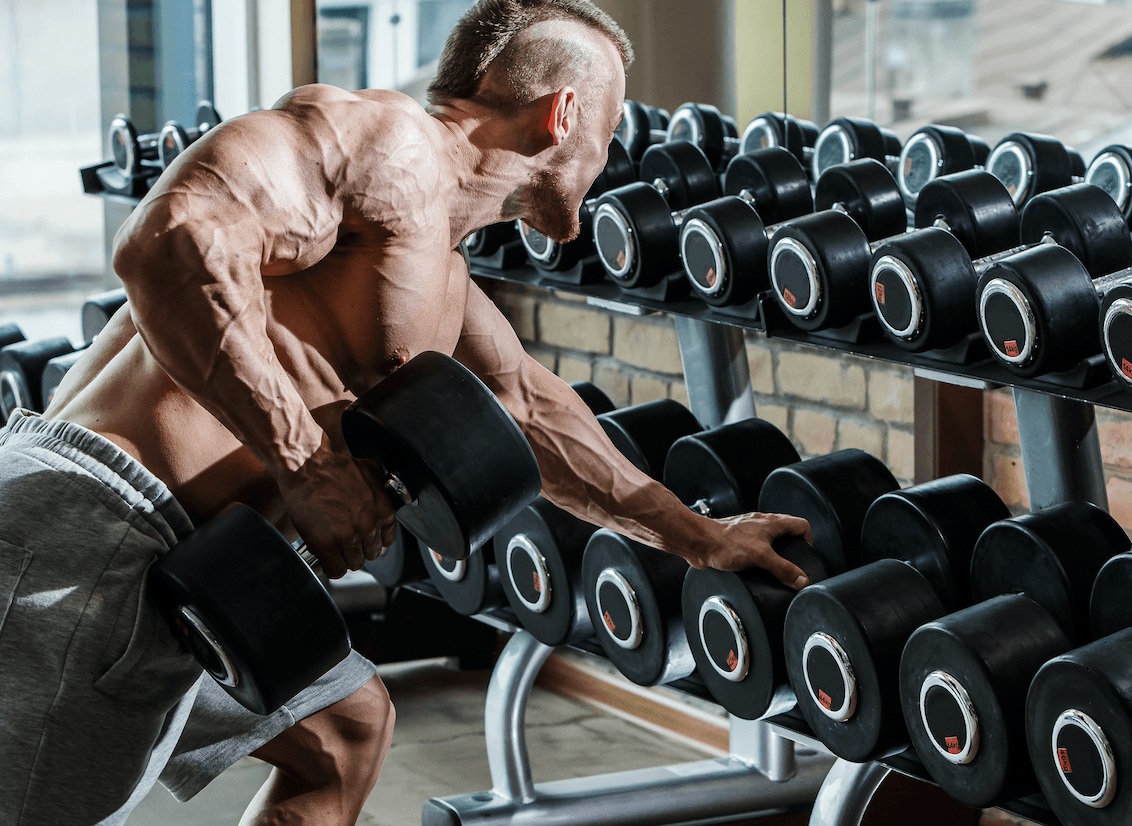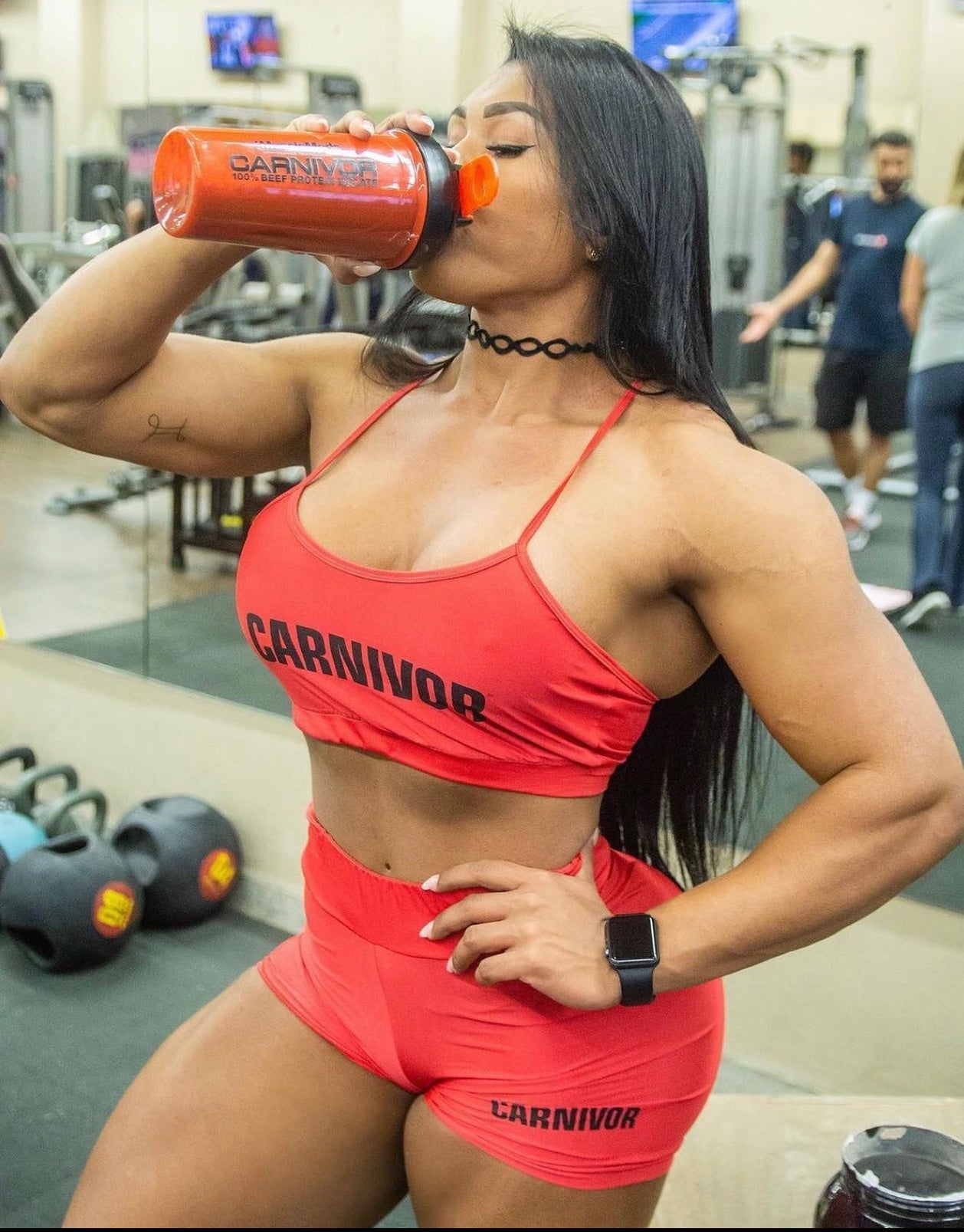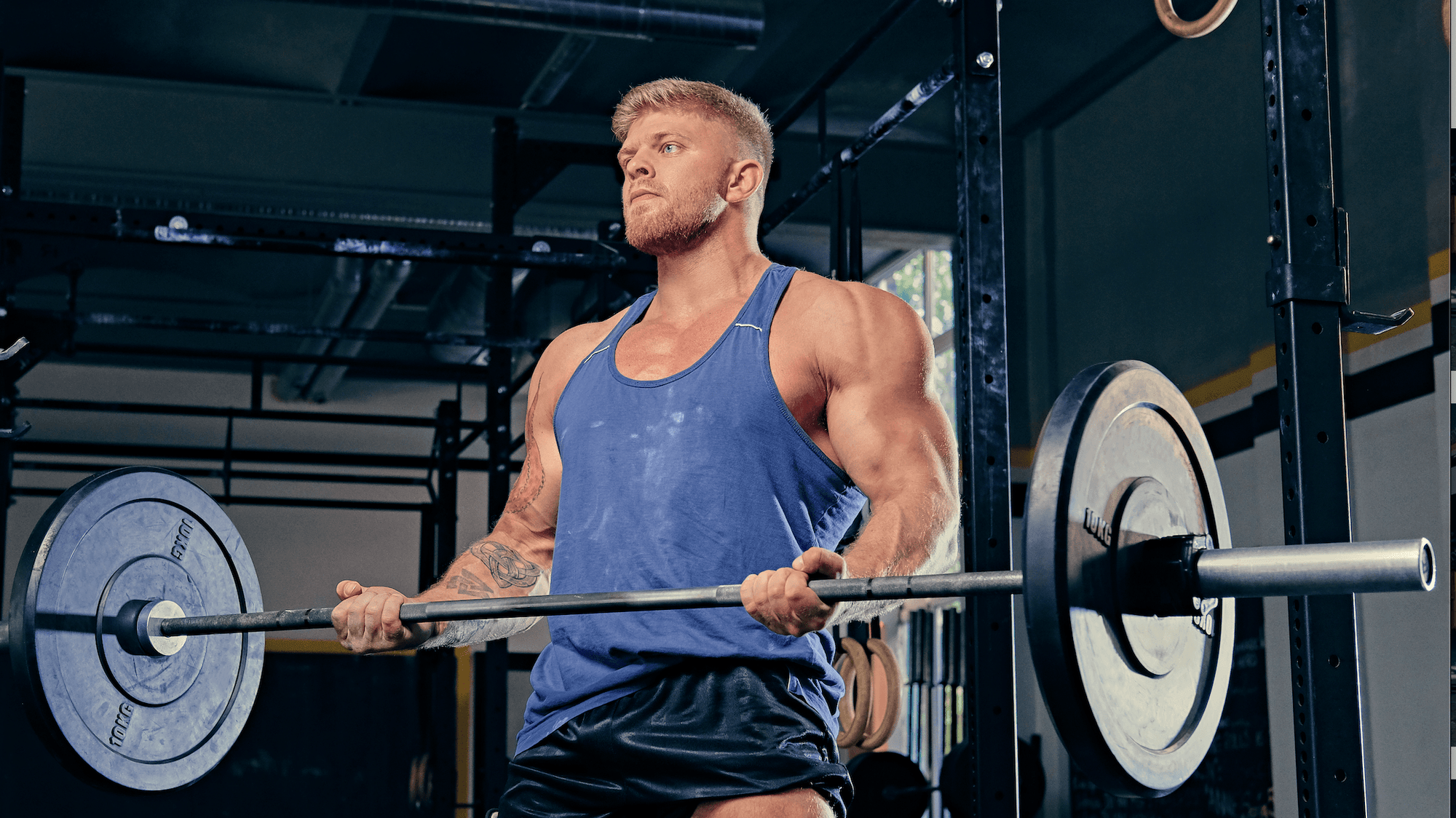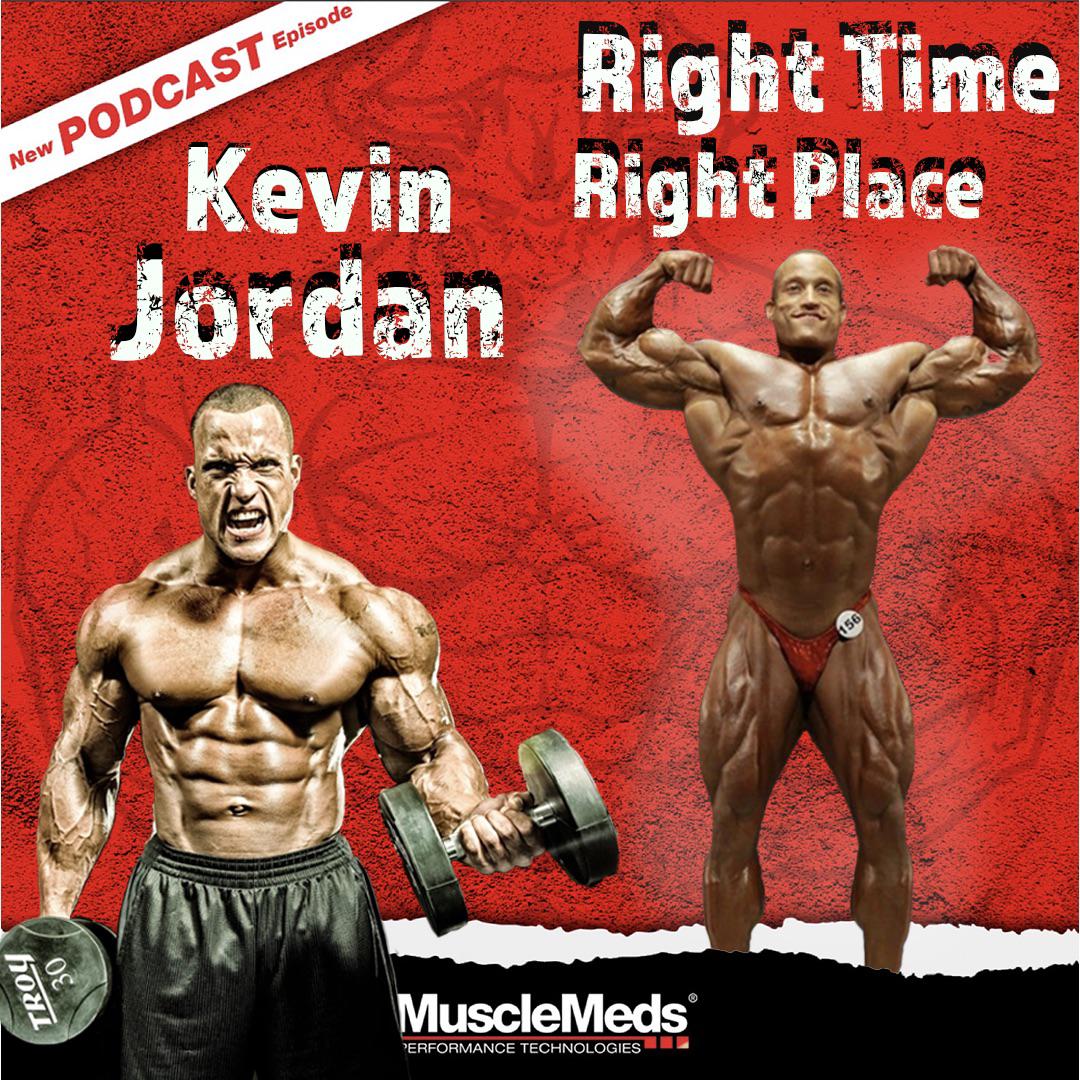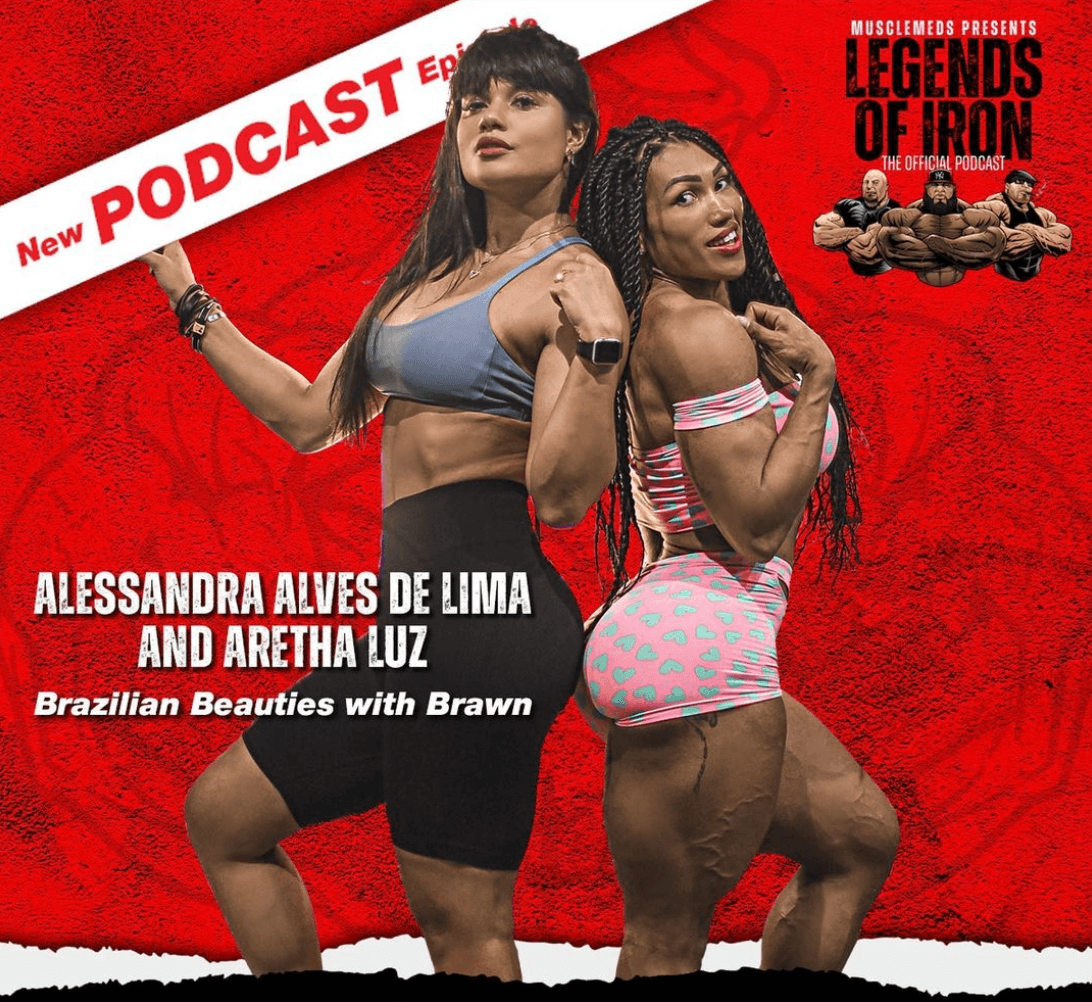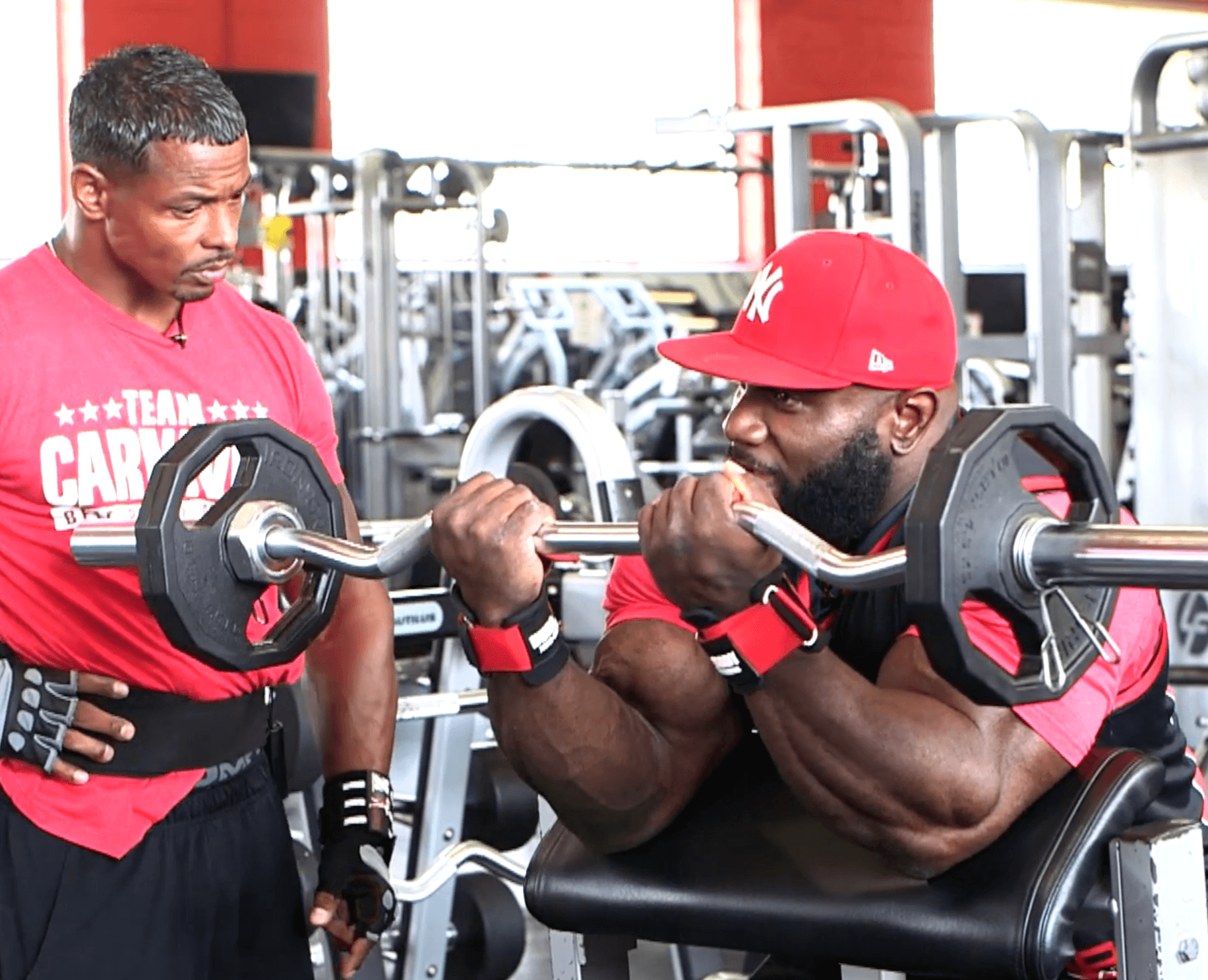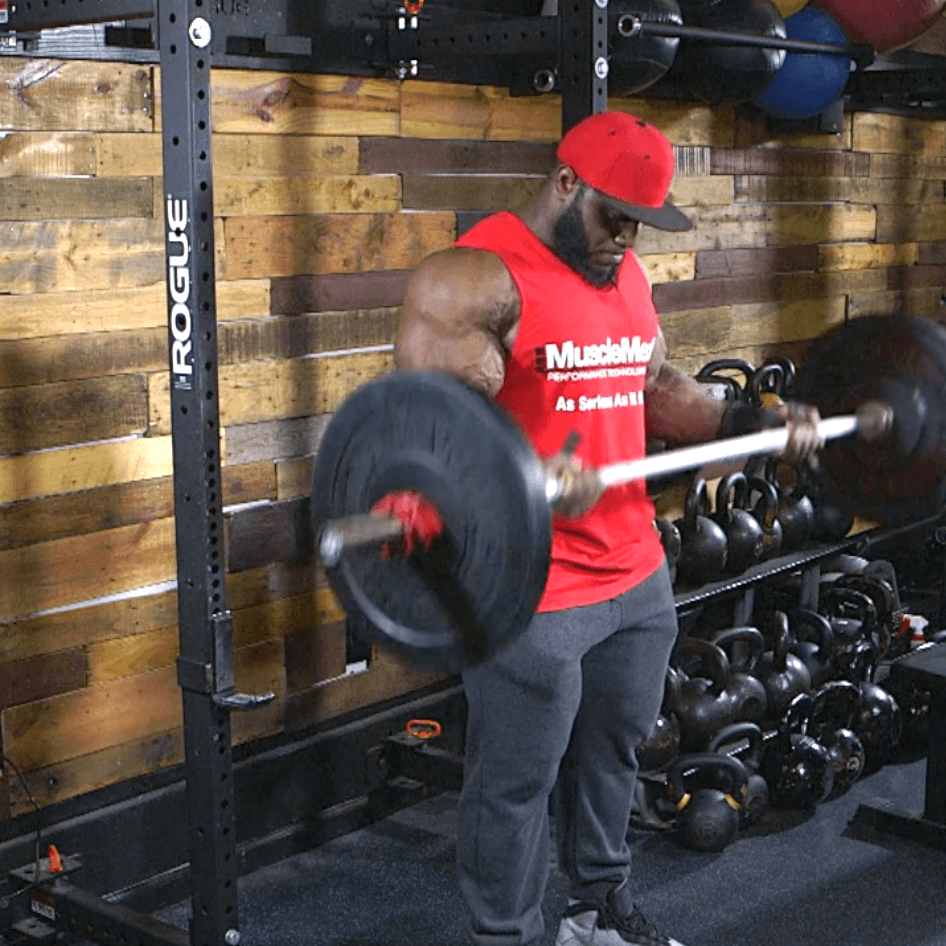beefy blog articles
THE MEAT & Potatoes
Nutrition
The Keto Cutting Plan
The keto diet. This new dieting trend has continuously gained popularity throughout the past several years. Is it all hype? Or could it potentially be your next guideline for cutting season? Let’s dissect this new technique to cut fat and separate the facts from myth. The standard diet practices usually call for a moderate to high protein and carbohydrate intake, while keeping fats low. The keto diet aims to keep fats high, moderate protein, and low carbs. The idea behind this diet is to limit carbohydrate intake and force your body to burn fat for fuel. Sounds too good to be true right? The keto diet isn’t for everyone. Removing one of the three macronutrient groups from your diet nearly in its entirety can pose a challenge for most for an extended period of time. The science behind the keto diet is unique and fascinating in a number of ways. Typically, the body relies on carbohydrates to be ingested and broken down into glucose. From here, the glucose is converted into energy and utilized by the body. This process is known as glycolysis. When following a ketogenic diet, this process will no longer apply as the primary source of energy for your body to utilize. When carbohydrate intake is limited, the body must make an adjustment in order to stay energized. The process of ketosis begins inside the liver. When sufficient carbohydrates are not present, the liver will begin to break down fats into ketones that are pushed into the blood stream.The body will adapt to the new situation and become reliant on fat for energy.Since all of our bodies are unique in many ways, there are no numbers set in stone when it comes to target macronutrient intake. One body may require more or less proteins, carbs, and fats than another. The typical carb intake while following a keto diet is between 30-50g a day. This is the first step to adapting to the diet. Dropping your carbs won’t cut it though. You may be accustomed to a higher protein diet, your next step will be to drop that intake to consist of about 25% of your diet. The reasoning behind this is because high amounts of protein can be converted into glucose, therefore preventing the body from entering ketosis. This leaves us with our new key source of energy...Fats. These will make up about 70% of our diet. So who can benefit from the keto diet? Those who are focused on shredding body fat down have potential to benefit greatly from adopting this dieting technique when they’re able to stick with it in the long run. This isn’t a quick fix by any means. Those who struggle with portion control have been known to reap the most benefits from keto. Typically carbs and overeating have gone hand in hand since the beginning of junk foods. Eliminating the intake of these empty calories alone can be a tremendous step in the right direction of a weight loss journey.
There’s several reasons why someone on a journey to gain more muscle may want to hold off on adopting the ketogenic diet. Fats slow digestion, therefore such a high intake of fats can help keep you satiated for longer. This is not ideal for someone striving to gain weight, as hunger will need to be your friend in order to pack in calories. A higher protein intake consisting of 40% of your diet is the ideal range for those looking to pack on size.The ketogenic diet can be a powerful tool for those aiming to shred down body fat for aesthetic, health, or other reasons. The restrictive aspects of this eating plan are the biggest obstacle to overcome for those who choose to try it. Being accustomed to eating carbohydrates our entire lives, it’s not easy to cut them down to minimal trace amounts. The shift from burning carbohydrates to fats for fuel can be taxing on the body and mind. If you can adapt, the rewards can be well worth the sacrifice.
member
How to Bulk the Right & Wrong Way
So you want to pack on some weight. Eat more and lift heavy weight...simple as that, right? Wrong. There’s an art to this. With no plan in place you can do more damage than good with your bulk. Increasing your caloric intake is the game plan, but at what rate is the question. Let's talk strategy to pack on size at the proper pace to avoid unwanted body fat. You’ve probably heard the term “lean bulk” before, let’s dissect what the term truly means and how it can save you time and effort throughout your journey.
Slow and steady wins the race. You’ve heard the saying before, and it couldn’t apply better to a bulking phase. Packing on pounds at a rapid rate is unhealthy in many ways. It’s taxing on your system to process an enormous surplus of food when it’s unprepared. Multiplying your intake by 1.5 or even 2x the amount of food compared to what you have eaten the day prior is a common approach for those who lack proper guidance. More calories equals more muscle is not always true when your system is overloaded. This will quickly result in lethargy, high blood sugar levels, increased blood pressure, and digestive issues. In the long run you will pack on weight at an accelerated weight, but it won’t be desirable weight. Excess calories will be stored as fat and when you transition into a cutting phase, it will be more work for you to get the weight off. To avoid the compilations, let’s take things one step at a time.Let’s start with your caloric intake and how to properly calculate this precise number with proven formulas backed by research. This particular formula is known as the Mifflin St Jeor Equation will help us determine your BMR (Basal Metabolic Rate). This is the amount of calories your body burns when at rest throughout the day.
Men: 10 x weight (kg) + 6.25 x height (cm) - 5 x age (y) - 161
Women: 10 x weight (kg) + 6.25 x height (cm) - 5 x age (7) - 161
Next we’ll calculate your TDEE (Total Daily Energy Expenditure). This is the amount of calories you burn throughout the day including all activity from exercise and lifestyle. Using the guideline below, you’ll select which Activity Level best suits you.
Sedentary = BMR x 1.2 (Little or no exercise/ desk job)
Lightly active = BMR x 1.375 (Light exercise 1-3 days/week)
Moderately active = BMR x 1.55 (Moderate exercise 6-7 days/week)
Very Active = BMR x 1.725 (Intense exercise every day, or exercising 2 xs/day)
Extra Active = BMR x 1.9 (Vigorous exercise 2 or more times per day)
BMR x Activity Level = TDEE
Now that you have an accurate count of your total calories burned throughout the day, we can calculate your goal intake to ensure lean muscle is built with minimal excess body fat. Multiplying your TDEE by 1.1 will give us a 10% caloric surplus. This minor bump in calories will ensure you are gaining weight at a safe rate, but the results will be very gradual. Patience will be your biggest asset when attacking a lean bulk protocol.Your macronutrient breakdown is important when it comes to packing on mass. Each gram of protein and carbohydrates is 4 calories. Every gram of fat is 9. Aiming for 1-1.5g of protein per pound of bodyweight will be the target on this program. This leaves you with a carb/fat ratio to determine to dedicate your remaining calories to. Carbs are an essential piece of the puzzle when it comes to muscle growth. Providing energy for inside & outside the gym. Committing 50% of your total calorie intake a day to carbs will ensure you have the energy necessary to power through your training and push the limits to achieve new muscle growth. The remaining calories will be taken in as fats.
This is your foundation for a lean bulking program. Supplements, cardio, and training styles are all other factors that will need to be weighed in. MuscleMeds Stemtropin is a powerful recomposition tool that goes hand in hand with a lean bulk protocol. Stemtropin naturally boosts Growth Hormone levels by 20% in as quickly as 2 hours. Elevated growth hormone levels result in lean muscle tissue growth, lipolysis, and elevated natural energy levels. The other powerful function of Stemtropin is boosting stem cell count.
Supplements
Carnivor Shred: The Breakdown
Nutrition is king when it comes to seeing results. Choosing a protein powder aligned with your body and goals plays an important role. Grabbing the cheapest clearance rack protein powder you can find simply isn’t going to cut it when your eyes are set on seeing change visually in the mirror and physically at the gym. Your choice of protein powder is the foundation of your body's recovery. Not all products are made equally. Corners are cut to save a few bucks, quality is sacrificed, and your results are compromised. Here at MUSCLEMEDS we do things the right way to ensure you get the results you set out for. We’re confident our protein will be the first and last choice you’ll ever need along the way throughout your journey. One of our most popular products is CARNIVOR SHRED, a revolutionary fat burning lean protein powder. This unique product brings up a number of questions that go alongside it, and in this article we’ll aim to clear them up.
When it comes to quality, our bioengineered beef isolate protein CARNIVOR leads the pack. The process in which our protein is made strips the beef protein of all fat and cholesterol, resulting in one of the cleanest nutrient profiles on the market. Beef protein offers a number of benefits over other types of protein sources such as whey, plant-based, or even whole foods. CARNIVOR provides 350% more amino acid profile of steak, it’s lactose free compared to whey protein, and contains no sugar or gluten. When you want to step up your fat loss game, that's' when CARNIVOR SHRED truly shines. The same base formula you know and trust, but we’ve added a kick to it to ignite your metabolism and shred down body fat at an accelerated rate.Every serving of CARNIVOR SHRED contains a unique blend to stimulate metabolism. Let’s break down each ingredient and how it plays a role in the process of lipolysis.Caffeine Anhydrous: Stimulate the body and mind to increase workout intensity allowing for maximum calorie burning sessions. Can aid with appetite suppressing to aid with adjusting to a caloric deficit.
Green Tea Extract: Green tea contains antioxidants, the one of which we are focused on being EGCG. This antioxidant has the ability to cause adipose cells to release their stored fat to be freed up and burning for energy.
Yerba Mate: A natural herb found in South America, it has the ability to reduce fat cell absorption inside the body, therefore reducing fat accumulation over time.
Green Coffee Bean: This natural fat burner contains chlorogenic acid, which is a powerful antioxidant known to prevent fat and glucose from being absorbed inside the gut.
Super-6-Paradol: Naturally found in ginger, super-6-paradol aids in the process of the body's use of glucose. This allows for workout endurance to be greatly enhanced, allowing for more calories to be burned.
The key to shredding down body fat efficiently is to maintantain as much lean body mass as possible throughout the process. More muscle mass means more calories burned, even at rest. CARNIVOR SHRED allows you to both feed your muscles to prevent the breakdown, as well ignite your metabolism to enhance calorie burning.
Supplements
What Is “The Pump”?
You may have heard this term used in your favorite bodybuilding motivation videos or documentaries. You see it used as an adjective in social media posts online. At a quick glance, you get the general idea of what “having a pump” means. Your muscles get a unique sort of fullness to them that can’t be done through any other method other than resistance training. Typically, it’s when you look your best. In this article we want to start from scratch and explain this term in its entirety so you can understand the science behind it, how to capitalize on it, and grow.
The first step to understanding the pump is the science behind it. Our driving force and precursor inside the body is nitric oxide. This compound is found inside every blood vessel in the human body. It plays a key role in regulating blood pressure, maintaining a healthy immune system, and preventing a number of diseases. It’s primary function for our topic in this article is its ability to transport blood more efficiently. Nitric oxide is released from the inner layer of blood cells. When released, it gives the blood vessels the ability to become flexible. The purpose of this being to allow them to dilate and increase blood flow. This immediately comes into play when resistance training due to the blood rush to working muscle groups when training. As muscles are working, the body sends blood to the muscles being contracted to engorge them with nutrients.
So how does one achieve this pump? The first and most important method is training. The body does not respond in the same way to every training style out there. It’s important to keep in mind that every individuals body is unique and may respond to stimuli in a different way. Typically, higher volume workouts lead to achieving a strong pump. This means higher reps, and shorter rest periods. A typical rep range to aim for would be 12-20 total repetitions for each exercise of every set. Your rest time should not exceed longer than 60 - 90 seconds max between sets. This style of training is geared purely towards hypertrophy. It’s not to say if you dip below 12 reps you will not induce a pump, these are simply optimal rep counts and rest times to maximize blood flow.
Certain kinds of foods contain the amino acids we desire to achieve this peak blood flow, but the majority of them are found in low doses. These amounts would require a tremendous amount of food in order to hit the desired amounts. The best attack on the pump is supplementation. Nitric oxide boosters have been accepted as a staple supplement for resistance training for nearly over a decade. NITROTEST is a prime example of how to utilize supplements to your advantage to achieve maximum nutrient delivery to working muscle groups during your training. NITROTEST packs in a heavy hitting 6g blend of 1:1 ratio L-citrulline and L-arginine. These two amino acids are both utilized to boost nitric oxide levels inside the body. Through a chemical process, L-citrulline actually converts into L-arginine, and L-arginine into nitric oxide. You may wonder why we don’t supplement with strictly L-arginine in order to skip a step, and the answer lies in it’s absorbability. L-arginine goes through an extended process in order to be digested, while L-citrulline skips over this process and is absorbed directly into the bloodstream. Studies have shown a combination of the two amino acids is the best method to achieve peak nitric oxide levels. At a combined 6g between the two amino acids, NITROTEST reigns as the supreme pre workout when it comes to maximizing the pump.
Supplements
Intra Workouts: Do You Need One?
Push the limits. You’ve heard the saying before. What does it really mean and how do you break through the barrier physically and mentally? As you tear your body down throughout vigorous training, you may begin to wonder if there’s a secret to pushing through to bang out those extra few sets. Just as athletes chug their electrolyte drinks to stay fueled, what is the choice of those who’s area of interest is resistance training?
Amino acids are your building blocks of protein. You may have heard of branch chain amino acids (BCAAS). Supplementing with BCAAs has become routine for a number of weight lifters for decades. Often sipped on throughout the duration of your training session, let’s dive into how the body utilizes amino acids to benefit both your performance and recovery.
Branch chain amino acids consist of L-Leucine, L-Valine, and L-Isoleucine. Since the golden era of bodybuilding, these 3 key amino acids laid the foundation for intra workout supplements. Resistance training athletes utilize BCAAs for a number of beneficial boosts in their performance, recovery, and growth. Supplementing with BCAAs has been backed by research to prevent catabolism (muscle breakdown), increase protein synthesis, and enhance endurance throughout vigorous training sessions. These are rapidly absorbed into the bloodstream and provide muscle cells the fuel they need to maximize your workouts. Providing a continuous source of fuel for your muscle cells to feed off of allows you to train harder for longer.
BCAAs are part of a larger family known as essential amino acids (EAAs). These nine amino acids are unable to be produced by the body, meaning they must be taken in through diet or supplementation. With more research being done on enhancing performance over the years, the momentum has swung in favor of EAAs as the prime choice for intra-workout supplementation. Research has shown that when there is an absence of EAAs for your body to utilize to fuel your training, they are often synthesized from muscle cells potentially leading to catabolism.
MuscleMeds Amino Decanate is loaded with over 5g of EAAs and provides an added recover bonus as it packs in 5g of L-Glutamine per serving. L-Glutamine is a key element to relieving muscle soreness following intense training. When there are insufficient levels of glutamine inside muscle cells following training, the body scavenges it from other areas. It can also aid with maintaining a healthy immune and digestive systems.
The downside to many amino acid supplements is their lack of absorbability. What makes Amino Decanate unique is the powerful DecaDrive technology used to combat this issue. DecaDrive technology allows the body to maximize use of multiple pathways for rapid and efficient absorption, ensuring you get the most out of every serving of Amino Decanate.Whether you’re training for strength, reshaping your physique, building endurance, or anything in between...You can benefit from including amino acids into your protocol.
Training
Hitting Chest From All Angles
Building a powerful chest is on the agenda for nearly everyone who begins a weight training journey. Even with a lack of knowledge to start, everyone has that vision of putting up some serious weight on the bench press. In this article we’re going to dive into more than just how to increase your bench press, we want to focus on building a strong chest overall both physically and visually. While the bench press holds its place in this process, it is just a small piece of the puzzle. Sculpting a complete chest requires a knowledge of how to target the upper, middle, and lower chest. There are countless different training techniques of rep counts, slow eccentric/concentric movements, drop sets, etc. we will be focusing on the particular choice of exercises.
Working from the top down, we’ll start off what is often believed to be the most important focus point. Packing on mass to your upper chest can be difficult, but extremely rewarding both in terms of strength and visual results. Most will notice that their incline bench press tends to be weaker than their flat bench right off the bat. This may not be the case for all, but the majority of individuals beginning out their life in the gym will notice this challenge when it comes to incline pressing. There are a number of factors that play into the reasoning for this. When your body is positioned for the incline press, the body is unable to recruit the entire muscle to complete the movement. The stress is placed on the upper portion of the pec along with the shoulders in order to manage the weight. When it comes to incline barbell/dumbbell pressing the range of motion heavily differs from flat bench movements. Stabilizing the weight to not only come down, but prevent it from falling forward is a new challenge your body must take on in order to complete the movement safely. Putting an emphasis on these exercises can greatly benefit your shoulder strength. The mid-portion of our chests is often the focal point of most chest day workout routines. The majority of movements performed on a flat bench will be targeting this area. While you may be strongest with these exercises, it’s important to branch out away from them if you want to develop proportionate strength and mass to your chest. The lower portion is often the most neglected, as the choices of exercises are more limited. This part of the pectoralis will still be activated during movements such as the flat barbell bench press, but choosing to isolate it with a few select movements can be the difference in creating a strong lower pec line. To build a balanced chest, we must be careful in our selection of exercises to not only divide the focus between the upper, middle, and lower best but also the inner, outer, and center portions of our chest. Evenly distributing strength throughout the chest will help increase the size and strength of The following chart offers a well rounded variety of exercises to ensure all portions of the pec are activated throughout your training session.
Lower
Middle
Upper
Decline BB Bench Press
DB Floor Press
Incline DB Press
Decline DB Flys
Pec Deck Machine
Incline Cable Flys
Dumbbell Pullover
Plate Loaded Chest Press
Decline Push Ups
Standing DB Chest Raises
Reverse Grip BB Bench Press
Incline Svend Press
member
Cluster Sets & How To Use Them
Over the years spent in the gym you have likely heard of and performed supersets and drop sets to shake things up with your training. Cluster sets were actually introduced into the weightlifting world back in 1976, but have flown under the radar for years. They can be a powerful method to overload the muscles to improve muscle strength and size through unique methodology. This is an effective method to help break through a plateau that has kept your progress stagnant for some time. While cluster sets are typically used to boost compound lift strength, you can still reap the benefits for accessory movements as well. The science behind the effectiveness of this method is fascinating. To give you a better understanding as to why this style of training is so effective, let’s get a general understanding of how the body responds to it internally.
Our muscular systems are made up of two types of muscle fibers we will refer to as fatigue and fast twitch. Typically only fast twitch muscle fibers are associated with weight training, and few mention the use of slow twitch in the gym when resistance training. Studies have shown that slow twitch fibers do in fact play a role in weight training. These fibers bring blood to the muscles, help prevent fatigue, and extend muscle contractions for prolonged periods of time. Cluster sets activate and recruit both of these types of muscle fibers, making this a powerful method for building both strength and endurance in the gym. Because this training calls for heavy weight to be used, your fast twitch muscle fibers will be relied on primarily. Due to the length of each set and your body being deprived of rest time, slow twitch muscle fibers will be utilized as well to endure the length of the set. So what is a cluster set and how do you perform them? Let’s break it down.
Cluster sets are lengthened sets that include intra-set rest time. For this style of training, you’ll have to shift gears in your mind. Typically you bang out a strong set, rest, and repeat. When performing cluster sets you will perform a small number of reps, rest for a short period of time, complete more reps, rest again, and repeat 1-2 more times for a total of 3-4 cycles before one set is complete. Only then will you rest for generally between 60-90 seconds. Now that you have a general understanding of how these sets are performed, the next step would be figuring out your ideal number of reps and rest time to aim for.
Similar to supersets and drop sets, there is no set number of reps/sets that is required to properly perform a cluster set. There is flexibility and experimenting with different ranges is recommended to find what works best for you. Although there are some recommended places to start. For those who are focused on strength gains, the Poliquin 5x5 cluster set is one of the most favored ranges to hit. This method puts your maximum strength to the ultimate test. You will utilize roughly 90% of your 1RM to perform the following
Step 1: 1 Rep Followed By 15 Second Rest
Step 2: 1 Rep Followed By 15 Second Rest
Step 3: 1 Rep Followed By 15 Second Rest
Step 4: 1 Rep Followed By 15 Second Rest
Step 5: 1 Rep Followed By 2 Minutes Rest
That concludes ONE set. Repeat for a total of 5.
When size is the price, cluster sets can be a powerful method when it comes to hypertrophy. A simple shift of the sets/reps/rest can be put in place to change the focus of the set. These sets will focus on volume and constant intensity to overload the muscles.
Step 1: 3 Reps Followed By 15 Second Rest
Step 2: 3 Reps Followed By 15 Second Rest
Step 3: 2 Reps Followed By 90 Second Rest
That concludes ONE set. Repeat for a total of 4.
Like any other training method, some trial and error may be needed in order to find out what works best for your body and goals. Utilize cluster sets to break through plateaus when it comes to strength and size. This hidden technique can be the push you need to break new ground. Just be prepared because these sets will be sure to leave you hurting for several days to follow due to the prolonged length of the sets that will be a shock to your system.
akim williams
TRAINING TIPS
Locked Out?! Are you a MuscleMeds Member?
GET FULL ACCESS
You'll notice some posts are restricted to MuscleMeds Members Only! Become a member today and unlock access to all of our videos, articles, exclusives, and more!

